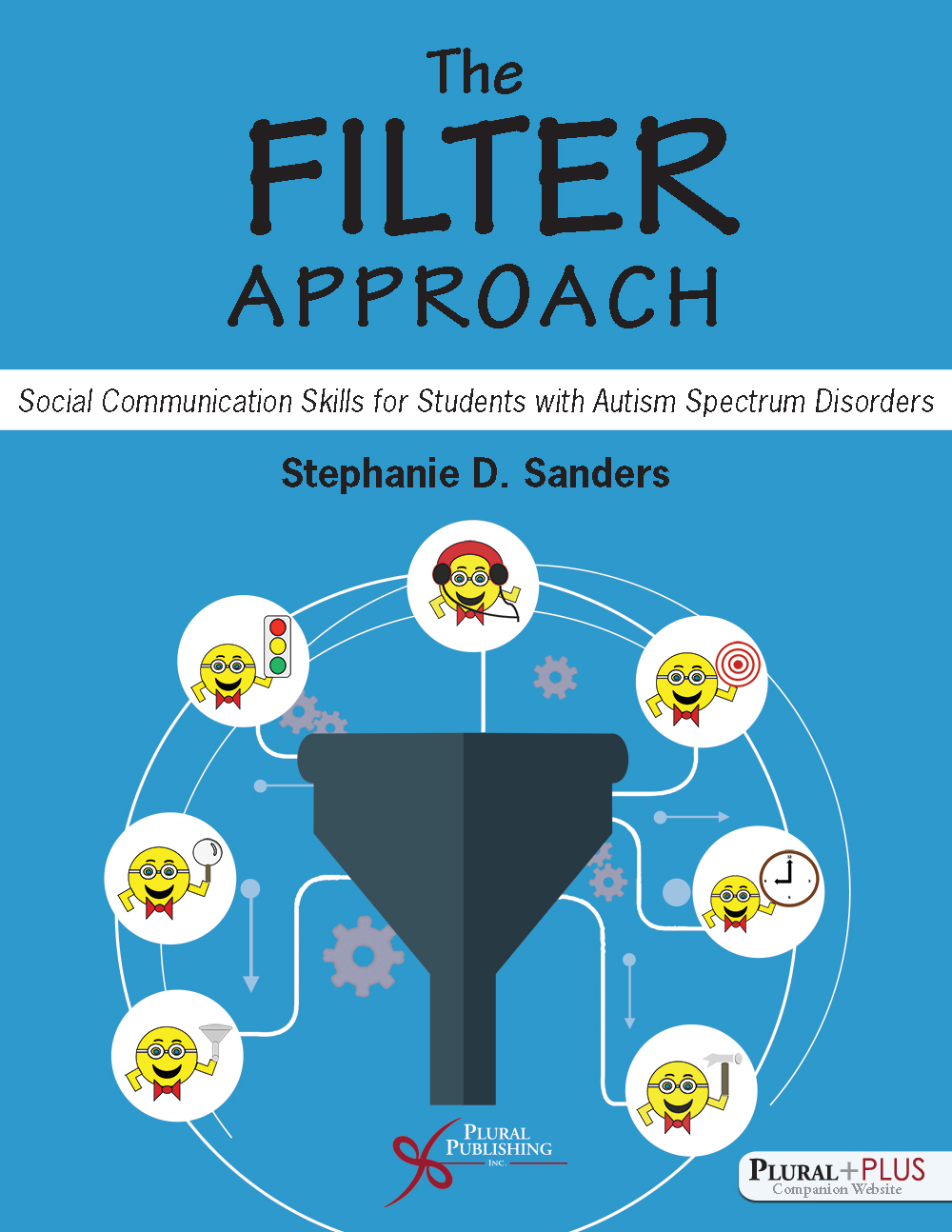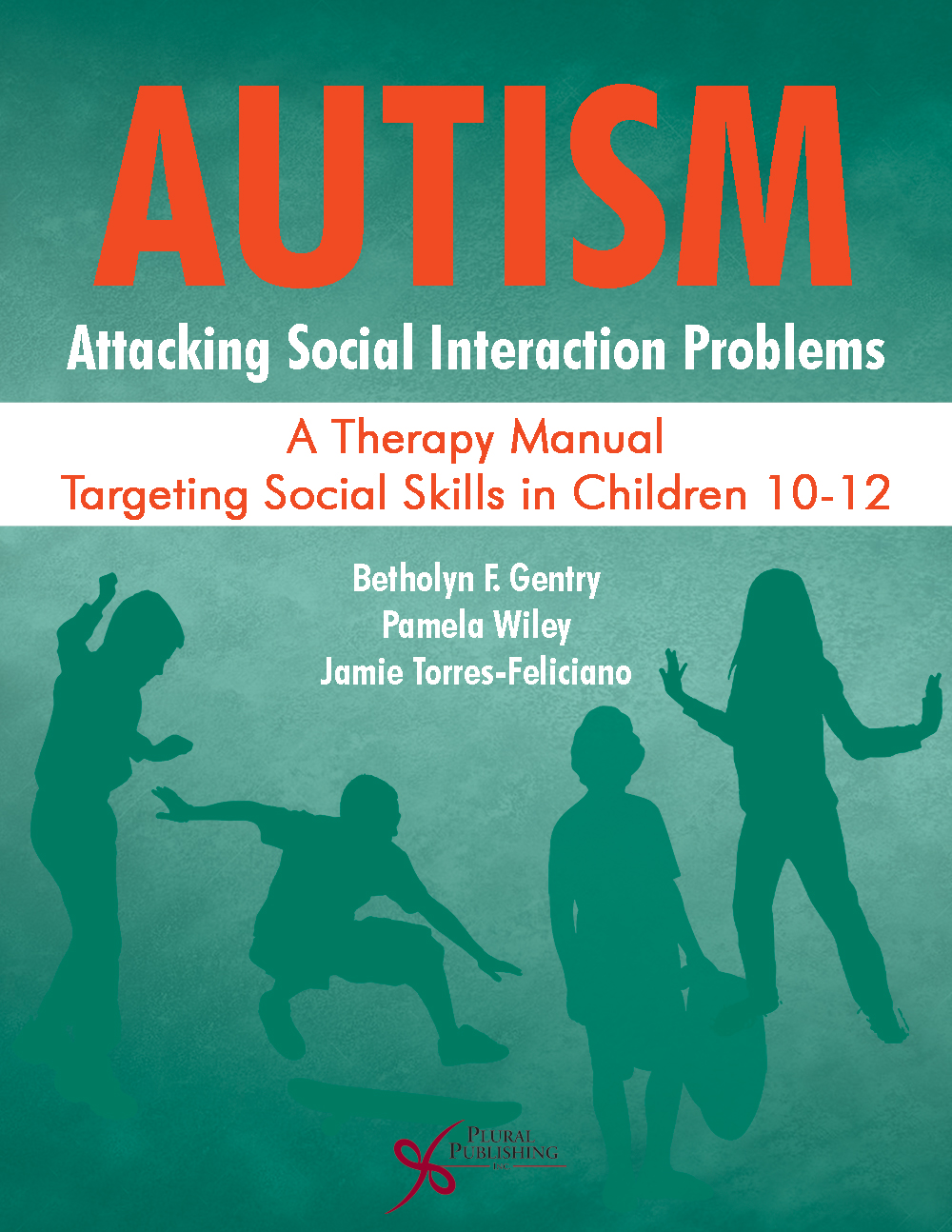
Behavioral Principles in Communicative Disorders: Applications to Assessment and Treatment
First Edition
Christine A. Maul, Brooke R. Findley, Amanda Nicolson Adams
Details: 282 pages, B&W, Softcover, 7" x 10"
ISBN13: 978-1-59756-788-6
© 2016 | Available
For Instructors
Purchase Print Book
Price: $109.95
Behavioral Principles in Communicative Disorders: Applications to Assessment and Treatment examines the basic principles of the science of behaviorism and applies those principles to the assessment and treatment of communicative disorders. It begins with the history and basic principles of behaviorism, as well as a chapter examining Skinner's (1957) concept of verbal behavior and functional units of verbal behavior. The text then discusses functional behavior assessment, the formulation of operationally defined target behaviors, discrete trial treatment procedures, and various techniques for increasing desirable behaviors and decreasing undesirable behaviors. The concluding chapters describe single-case research designs that support the efficacy of behavioral principles and address ethical questions and historic controversies surrounding the application of those principles.
Speech-language pathologists (SLPs) seek to change communicative behaviors in the clients they serve; the principles of behavioral science have many applications to the assessment and treatment of communicative disorders. There is a vast body of evidence indicating the efficacy of behavioral approaches in behavior modification, and SLPs have been tasked by their professional associations to employ evidence-based practices. Also, there is an appreciation for the usefulness of behavioral principles in treating clients with very severe communicative disorders, such as autism, apraxia, and dysfluency. This is evidenced by the development of the field of applied behavior analysis and the growing numbers of board certified behavior analysts (BCBA), with whom SLPs may be called upon to collaborate.
Behavioral Principles in Communicative Disorders is primarily designed for practicing speech-language pathologists looking for detailed descriptions of evidence-based treatment procedures, as well as professors and students in university programs in communicative disorders. However, professionals in other fields, such as applied behavior analysis and special education, will also find this to be a highly useful text.
Reviews
". . .Very well organized, clear focus, and an easy read. The material is well integrated with a nice mix of scenarios, assessment forms, questions and chapter summaries that helped reinforce the ideas, theories, and methods the authors were introducing. The common theme of ABCs and behavioral approaches was apparent and clearly interwoven throughout the text. I particularly liked the addition of the chapter on research, ethics, scope of practice, etc. as a final chapter to the text. It was an excellent ending for the book and in line with current ASHA requirements for the use of evidence based practice and understanding the basics of research."
—Jacqueline Guendouzi, PhD, Southeastern Louisiana University
"The book does a good job of breaking the concepts behind the ABA approach down and explaining them in ways that someone with a background in speech-language pathology or communication science but no background in ABA could understand them."
—Laura Dilley, PhD, Michigan State University
"The material is well integrated and provides a reasonable approach to the integration of themes. The text is well written, easy for undergraduate and graduate students in SLP."
—Anthony P Salvatore, PhD, University of Texas at El Paso
"The authors of Behavioral Principles in Communicative Disorders intended to create an accessible text that would bridge the fields of ABA and speech-language pathology. In writing a comprehensive, accessible, and relevant guide to ABA geared toward SLPs in training, Maul et al. have more than satisfactorily accomplished their goal. Because ABA practitioners and SLPs frequently collaborate in interdisciplinary teams in support of individuals with communicative disorders, we believe that this text makes a unique and valuable contribution to both fields. We sincerely hope that the book will serve as a catalyst for future collaborations between ABA and speech-language pathology, as it broadens a mutual understanding of speech-language pathology and ABA."
—Matt Tincani and Amanda Guld Fisher, in Perspectives on Behavioral Science (March 2018)
Preface
Contributors
Chapter 1. Introduction to Behaviorism
Why Should SLPs Learn the Principles of Behaviorism and How to Apply Them?
Definition and History of Behaviorism
Principles of Behaviorism
Behavior Modification: The Early Days
Philosophical Underpinnings
Early Experimentation in Behavior Modification
Applied Behavior Analysis
Chapter Summary
Application Exercises
References
Chapter 2. Verbal Behavior
Frances Pomaville
Definition of Verbal Behavior
Acquisition of Verbal Behavior
Functional Units of Verbal Behavior
Autoclitics: The Behavioral Explanation of Rules of Grammar
Multiple Causation: Complex Verbal Operants
Implications for Assessment and Treatment of Communicative Disorders
Chapter Summary
Application Exercises
References
Chapter 3. Defining and Measuring Behaviors
Defining Behaviors
Measuring Behaviors
Graphing and Interpreting Measurement Data
Determining Baseline Measures
Chapter Summary
Application Exercises
References
Chapter 4. Functional Behavior Assessment and Applications to Communicative Disorders
Definition of Contingencies
A-B-C Contingencies
Definition and Purpose of Functional Behavior Assessment (FBA)
Questions FBA Seeks to Answer
Gathering Data
FBA: Applications to Verbal Behavior
Assessment of Verbal Operants
Chapter Summary
Application Exercises
References
Chapter 5. Discrete Trial Teaching (DTT): A Framework
What Is a Discrete Trial?
Components of the Discrete Trial
Data Collection and Criterion Levels
Probe Procedures
Chapter Summary
Application Exercises
References
Chapter 6. Teaching New Behaviors
Antecedent Manipulations
Shaping New Behaviors
Chaining: Forward and Backward
Positive Reinforcement: Delivering the Consequence for Desired Responses
Negative Reinforcement
Chapter Summary
Application Exercises
References
Chapter 7. Generalizing and Maintaining Behaviors
Stimulus Discrimination Versus Generalization
Types of Generalization
Techniques for Promoting Generalization During Treatment
Probing for Generalization in the Clinic Setting
Techniques to Promote Maintenance in Natural Settings
Chapter Summary
Application Exercises
References
Chapter 8. Decreasing Undesirable Behaviors
Types of Undesirable Behavior for Reduction
Assessment of Undesirable Behaviors
Antecedent Interventions
A Clinical Definition of Punishment
Extinction
Differential Reinforcement
Chapter Summary
Application Exercises
References
Chapter 9. Establishing the Evidence Base: Single-Case Experimental Designs
What Is Science?
Formulating a Research Question
Scientific Experimentation Versus Routine Clinical Work
Characteristics of Single-Case Research Designs
Types of Single-Case Research Designs
External Validity in Single-Case Research
Chapter Summary
Application Exercises
References
Chapter 10. Ethics in Scientific Research and Clinical Practice
A Brief History of Ethical Issues in Scientific Research
The National Research Act of 1974 and the Belmont Report
The Distinction Between Scientific Research and Clinical Practice
Ethical Issues in Conducting Treatment
Chapter Summary
Application Exercises
References
Glossary
Index

The FILTER Approach: Social Communication Skills for Students with Autism Spectrum Disorders
First Edition
Stephanie D. Sanders
Details: 383 pages, Full Color, Spiral Bound, 8.5" x 11"
ISBN13: 978-1-59756-939-2
© 2016 | Available

Autism: Attacking Social Interaction Problems A Pre-Vocational Training Manual for Ages 17+
First Edition
Pamela Wiley, Betholyn F. Gentry
Details: 296 pages, B&W, Softcover, 8.5" x 11"
ISBN13: 978-1-59756-794-7
© 2016 | Available

Educating Students with Autism Spectrum Disorder: A Model for High-Quality Coaching
First Edition
Joshua K. Harrower, Louis G. Denti, Marcia Weber-Olsen
Details: 245 pages, B&W, Softcover, 7" x 10"
ISBN13: 978-1-59756-786-2
© 2016 | Available

Autism: Attacking Social Interaction Problems-A Therapy Manual Targeting Social Skills in Teens
First Edition
Betholyn F. Gentry, Pamela Wiley
Details: 176 pages, B&W, Softcover, 8.5" x 11"
ISBN13: 978-1-59756-785-5
© 2016 | Available

Autism: Attacking Social Interaction Problems- A Therapy Manual Targeting Social Skills in Children 4-9
First Edition
Pamela Wiley, Betholyn F. Gentry, Jamie Torres-Feliciano
Details: 392 pages, B&W, Softcover, 8.5" x 11"
ISBN13: 978-1-59756-792-3
© 2016 | Available

Autism: Attacking Social Interaction Problems- A Therapy Manual Targeting Social Skills in Children 10-12
First Edition
Betholyn F. Gentry, Pamela Wiley, Jamie Torres-Feliciano
Details: 252 pages, B&W, Softcover, 8.5" x 11"
ISBN13: 978-1-59756-793-0
© 2016 | Available



